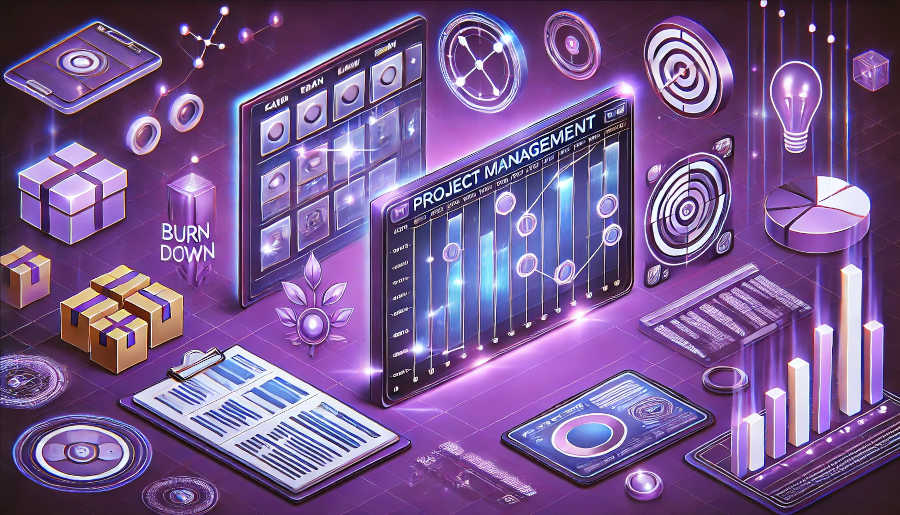Technical Feasibility
Technical feasibility is the foundation of any successful product development. During the TR, a thorough assessment of the technical aspects of the product is carried out. This includes evaluating whether the proposed technologies and design concepts are practical and can be implemented within the given time and resource constraints. The team needs to consider factors such as the availability of materials, manufacturing processes, and the compatibility of different components. For example, if a new smartphone is being developed, the feasibility of using the latest high - performance processor needs to be examined. Can the battery technology support the power consumption of this processor? Are the manufacturing facilities capable of producing the required circuit boards with the specified precision? A detailed analysis of these aspects helps in determining if the product can be built as envisioned.
Moreover, technical feasibility also involves looking at the long - term implications. Technologies are constantly evolving, and a product that is feasible today may become obsolete in a short time. So, the TR should also consider the scalability and adaptability of the chosen technologies. For instance, in the field of software development, the programming languages and frameworks used should be able to accommodate future updates and improvements. If a technology is too niche or has a limited community support, it may pose risks in the long run. By evaluating technical feasibility comprehensively, the product development team can avoid costly mistakes and ensure that the product can be brought to market successfully.
In addition, the evaluation of technical feasibility should not be limited to the internal capabilities of the company. External factors such as the availability of third - party components and technologies also need to be considered. Sometimes, a product's success may depend on the seamless integration of a particular off - the - shelf component. The TR should assess the reliability and compatibility of these external elements. This could involve testing samples from different suppliers or researching the reputation of the providers in the market. Only by taking all these factors into account can the team accurately determine the technical feasibility of the product.
Product Architecture
The product architecture is the overall structure and organization of the product, which defines how different components interact with each other. A well - designed product architecture is essential for the product's performance, maintainability, and extensibility. During the TR, the product architecture is carefully reviewed to ensure that it meets the product requirements. The architecture should be modular, which means that different functions of the product are grouped into distinct modules. This allows for easier development, testing, and maintenance. For example, in a car, the engine, transmission, and electrical systems are separate modules. A modular architecture enables the development team to work on different parts independently, reducing the complexity of the overall development process.
The interaction between different modules is also a critical aspect of product architecture evaluation. The interfaces between modules should be well - defined and standardized. This ensures that different components can communicate effectively without causing compatibility issues. In a software application, for instance, the API (Application Programming Interface) between different software modules needs to be carefully designed. A poorly defined API can lead to data transfer errors, performance degradation, or even system failures. By evaluating the product architecture's modularity and interface design during the TR, the team can identify potential problems early and make necessary adjustments.
Furthermore, the product architecture should be able to support the product's future growth and evolution. As market needs change and new technologies emerge, the product may need to be updated or enhanced. An architecture that is too rigid may not be able to accommodate these changes. For example, a mobile device's architecture should be designed in such a way that it can support future software updates, additional features like new sensors, or improved camera capabilities. A flexible product architecture allows the company to stay competitive in the market by quickly adapting to new trends and customer demands.
Component Design and Integration
The design of individual components and their integration into the overall product is another important evaluation point in the TR. Each component should be designed to meet its specific requirements, such as performance, reliability, and cost. For example, in the design of a laptop's battery, factors like capacity, charging time, and lifespan need to be considered. The component design should also take into account the manufacturing process. It should be easy to manufacture, assemble, and test. If a component has a complex design that is difficult to produce, it may lead to increased costs and longer production times.

Component integration is equally crucial. All components need to work together seamlessly to ensure the proper functioning of the product. This requires careful planning and testing. In a complex system like an aircraft, the integration of the avionics, engines, and hydraulic systems is a highly challenging task. Any misalignment or incompatibility between components can have serious consequences. During the TR, simulations and prototypes are often used to test the integration of components. These tests can help identify issues such as electromagnetic interference between different electronic components or mechanical vibrations that may affect the overall performance of the product.
In addition, the evaluation of component design and integration should also consider the supply chain. The availability of components from suppliers, their quality control, and the lead times are important factors. If a key component is sourced from a single supplier and there are no alternative options, it may pose a risk to the product's production schedule. The TR should assess the risks associated with the supply chain and develop contingency plans if necessary. This could involve qualifying multiple suppliers or having buffer stocks of critical components.
Performance and Reliability
Performance and reliability are two key aspects that determine the success of a product in the market. During the TR, the product's performance characteristics are evaluated against the predefined requirements. This includes factors such as speed, accuracy, and throughput. For example, in the case of a data storage device, the read and write speeds, as well as the storage capacity, are important performance metrics. The product should be able to meet these performance requirements under different operating conditions. This may involve testing the product in extreme temperatures, humidity levels, or under heavy workloads.
Reliability is also a critical factor. A reliable product is one that can operate without failures for a long period of time. To evaluate reliability, various techniques such as stress testing, fatigue testing, and accelerated life testing are used. In the automotive industry, for example, vehicles are subjected to thousands of kilometers of road testing to ensure their reliability. Components are also tested for their durability, such as the number of times a door can be opened and closed before it fails. By conducting these tests during the TR, the development team can identify potential reliability issues and take corrective actions.
Moreover, performance and reliability are not only important during the product's normal operation but also during its maintenance and repair. The product should be designed in such a way that it is easy to diagnose and fix problems. This includes having proper diagnostic tools and clear documentation. For example, in a complex industrial machine, the ability to quickly identify the root cause of a malfunction and replace the faulty component is essential for minimizing downtime. By considering performance and reliability from all these aspects during the TR, the product can be made more competitive in the market.
Risk Assessment and Mitigation
Risk assessment and mitigation are integral parts of the TR in the IPD process. Every product development project is associated with various risks, such as technical risks, market risks, and schedule risks. During the TR, a comprehensive risk assessment is carried out to identify these risks. Technical risks may include the failure of a new technology to work as expected, while market risks could involve changes in customer preferences or the entry of new competitors. Schedule risks may arise due to unforeseen delays in component development or testing.
Once the risks are identified, appropriate mitigation strategies need to be developed. For technical risks, this could involve conducting additional research and development, or having a backup technology in case the primary one fails. In the case of market risks, the company may need to conduct more market research to stay updated on customer needs and develop marketing strategies to differentiate the product from competitors. For schedule risks, contingency plans such as adding extra resources or adjusting the project timeline may be necessary.
Risk assessment and mitigation should be an ongoing process throughout the product development lifecycle. As the project progresses, new risks may emerge, and existing risks may change in nature or severity. The TR provides an opportunity to review and update the risk assessment and mitigation plans. By effectively managing risks through the TR, the product development team can increase the likelihood of project success and ensure that the product is delivered on time, within budget, and meets the required quality standards.
In conclusion, the Technical Review in the IPD process is a multi - faceted and crucial activity. By carefully evaluating technical feasibility, product architecture, component design and integration, performance and reliability, as well as risk assessment and mitigation, the product development team can make informed decisions. These evaluations help in ensuring that the product is technically sound, meets the market requirements, and can be developed and launched successfully. A thorough and well - executed TR is the key to developing high - quality products that can compete effectively in the global marketplace, reducing the chances of costly mistakes and delays during the product development journey. It is an investment in the long - term success of the product and the company as a whole.
ARTICLE TITLE :Five important evaluation points of TR in the IPD process ,AUTHOR :ITpmlib

















